[This is one over 100 articles in the author’s Astronomy Digest http://www.ianmorison.com]
I have come across a newish device for collimating telescopes called the OCAL Electronic Collimator. This is essentially a camera to view the inside of a telescope coupled with software to overlay a series of circles to make it easy to collimate a telescope whilst viewing a computer screen rather than, perhaps, using a Cheshire Eyepiece – as I have been using to collimate my 8 inch Ritchey-Chrétien telescope.
There have been articles about making a similar device using a ~£56 camera from Amazon and linking it with an overlay program running in ‘Panther Code’ on a Windows 10 computer.
It occurred to me that, as I have a several webcams, I might be able to make such a camera. I also have on my ‘imaging laptop’ a very nice piece of free software called ‘AlsCollimationAid’ which is designed to overlay three circles over an out of focus star image to make final collimation adjustments. I thus wondered if I could produce a similar system to OCAL using components and software that I had in hand.
Eyepieces have appropriate focal lengths to couple with a webcam and so I removed the 1.25 inch focuser barrel from my ZWO ASI 178 webcam and tried placing the ‘eye’ end of a number of eyepieces against its sensor window. I found that using a 12.5 mm focal length eyepiece I was able to produce a sharp image of a nearby object. I thus believed that it might be suitable for imaging the interior of a telescope. I then secured the eyepiece in place using ‘Blu-Tack’ and insulating tape (it was a prototype!) – making sure that the eyepiece was centralised over the sensor.
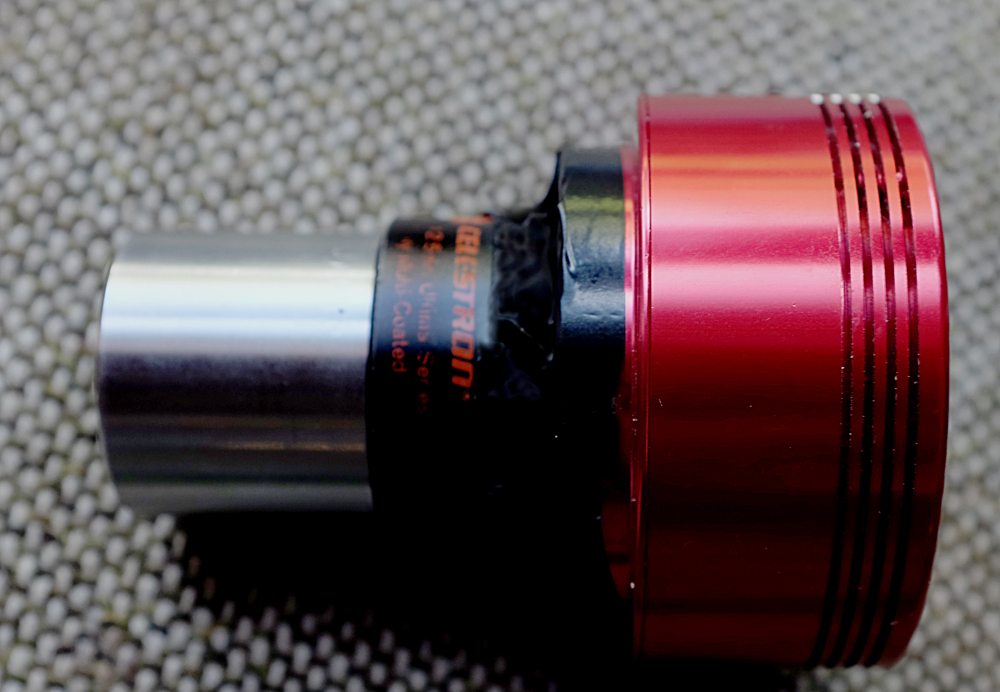
Using a 2 inch to 1.25 inch adapter, I mounted the eyepiece and camera into the focuser of my Ritchey-Chrétien and used SharpCap to view its image. Pleasingly, I observed a good view of the interior and found that if I greatly increased the exposure, I could see the circular outline of the silver eyepiece barrel – the rest of the image being greatly over exposed.

I then opened up AlsCollimationAid and was able to precisely centre it over the eyepiece barrel circle. Reducing the exposure, I could see the full extent of the spider vanes and their support – which I had not been able to see using my Cheshire Eyepiece. I had expanded the two circles to encompass the secondary obstruction and telescope aperture. As can be seen below, the view was not totally symmetric. This showed that the primary mirror was not perfectly aligned along the telescope tube.
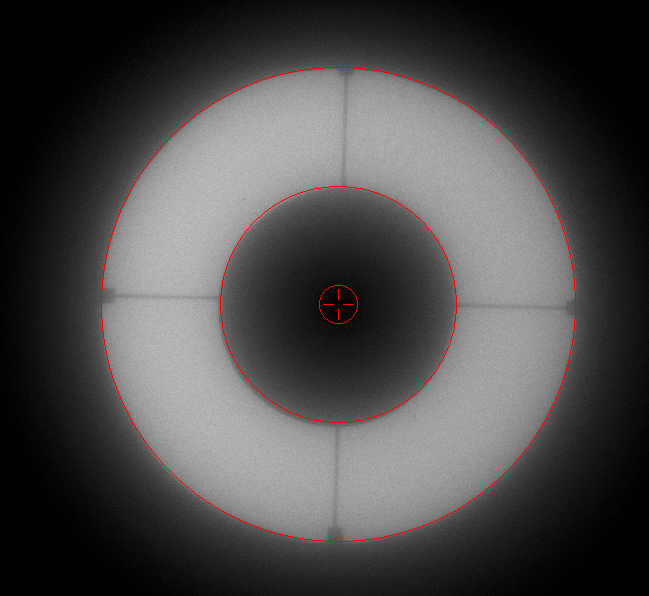
Very small adjustments to the primary mirror produced a symmetric view (without the circles).
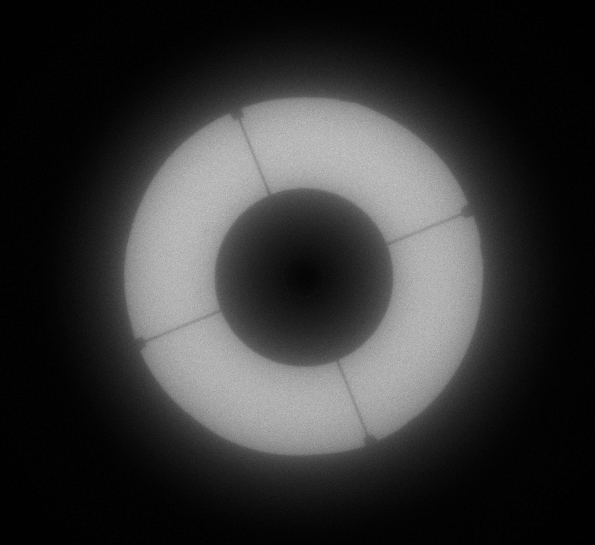
This will have slightly altered the secondary mirror collimation as the 6 and 8 inch GSO Ritchey-Chrétiens have a design flaw in that the focuser unit (including some extension pieces) is mounted on the rear of the mirror support, thus adjusting the primary mirror will affect the adjustment of the secondary so collimating these telescopes may need to be an iterative process: first adjusting the secondary mirror, then adjusting the primary mirror (if necessary) followed by a further adjustment of the secondary (if necessary) before, hopefully, not having to repeat the process.
Having reduced the exposure to show the telescope interior, I adjusted the collimation aid to give one circle to align with the outer edge of the secondary mirror and one to the edge of the telescope aperture as seen below.
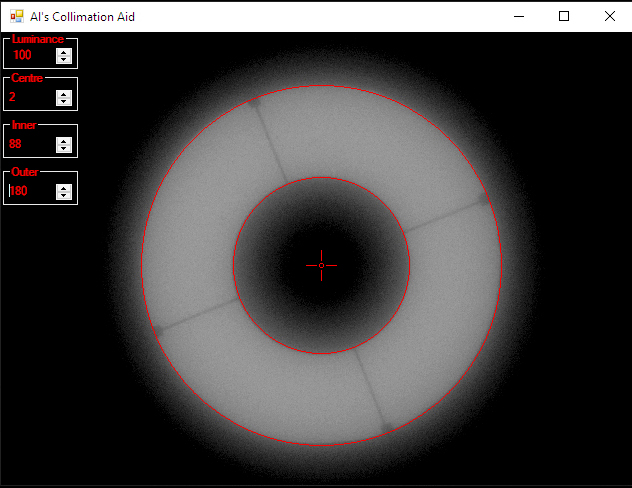
Increasing the brightness showed that the collimation I had achieved was very good but not quite perfect as the central cross was not quite in the centre of the dark ‘hole’.
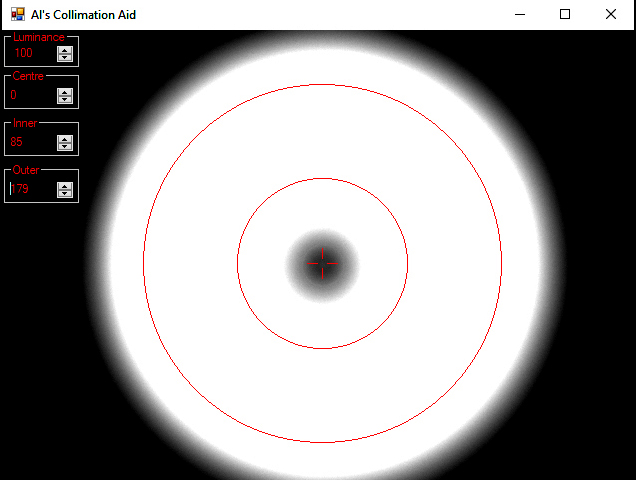
I then used my Cheshire Eyepiece to centralise the ‘viewing hole’ within the secondary central marker ring to give, I hoped, near perfect collimation to be checked later with an out of focus star. (I believe I could have used the camera view to make this adjustment.)
Having the accurately aligned the inner and outer rings on the secondary and mirror, I increased the brightness and saw that the centre of the rings lay precisely in the centre of the dark central spot. It appeared that the collimation was then very good.
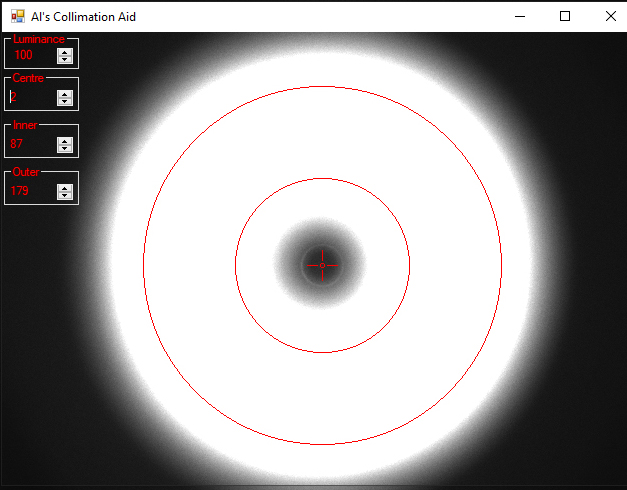
The key use of the camera system was to show me how to easily align the primary mirror. As I was then very close to collimation, the Cheshire eyepiece helped me make a final, very small, adjustment to the secondary.
I made a check of the collimation of my Vixen VC200L which is a type of sub-aperture Maksutov. The image below shows that secondary obstruction was precisely centred.
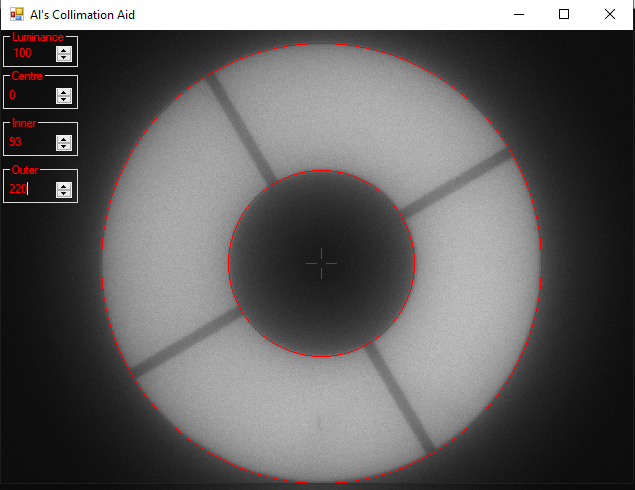
However, increasing the camera exposure the cross was not perfectly centred within the dark spot so a very minor tweak will be required . [I knew that from star tests, that it was pretty well collimated.]
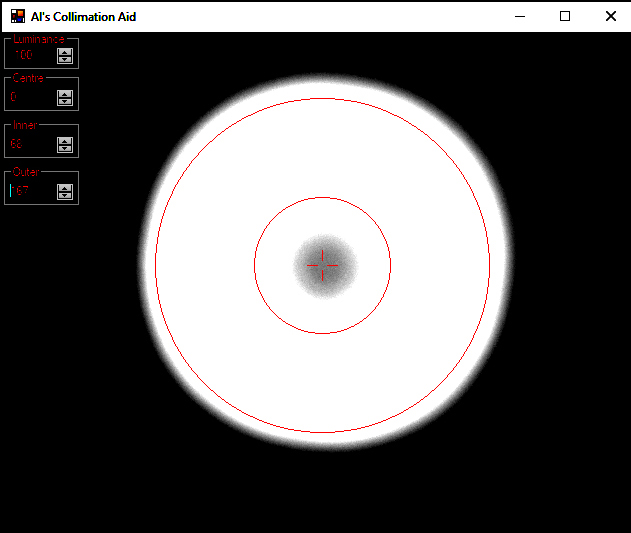
With Schmidt Cassegrains, the primary mirror is spherical so it has no optical axis and thus does not need adjusting so making their collimation easier. Though a Newtonian has a parabolic mirror which does have an optical axis, the secondary is flat so collimation is still easier than for a Ritchey-Chrétien – but I now know believe that it can be done quite easily.
Though I am sure that my webcam/eyepiece camera is not nearly as flexible as the OCAL collimator it has really helped me with collimating my Ritchey-Chrétien telescope – and at no cost.
